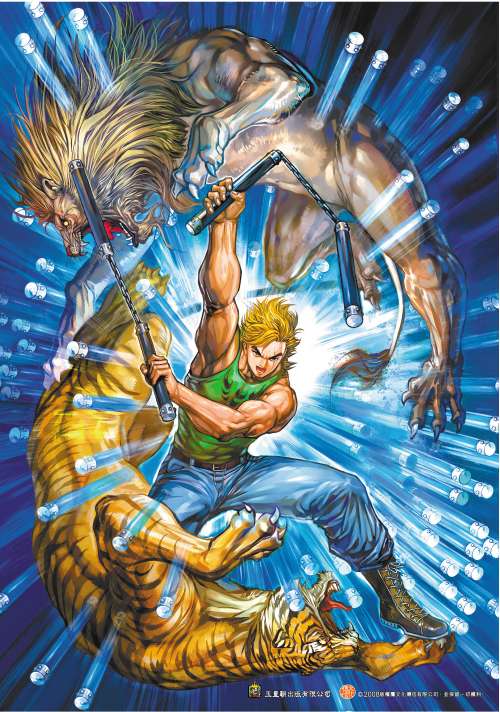China's subversive art of Manhua comes to Britain

The first Manhua comic appeared on the Chinese market in 1928. The genre was used as a political tool during the Second World War and by Mao's regime, before being adopted by today's underground artists, intent on challenging the state.
Now Britain's first exhibition of the Manhua tradition – which traces its roots back to Chinese drawings from 11th century BC – is being staged in London.
Manhua! China Comics Now, opening next Friday at the London College of Communication as part of China Now, a six-month cultural festival in Britain, will trace the 19th-century picture-story tradition out of which Manhua emerged, with a display of prints and rare palm-sized graphic novels which were originally used to provide education for the illiterate as well as political propaganda. The display of 200 pieces of artwork includes unofficial pirate versions of Hergé's Tintin, and China's long-running cartoon boy hero, San Mao. Most of the images have never been seen in the West.
During Mao's Great Leap Forward and the Cultural Revolution, comics were used as propaganda, featuring a smiling workforce and heroic images from folk legends.
In recent years, the artform has been adopted by a group of underground illustrators to challenge notions of freedom and modernisation in China.
Because of their subversive nature, Manhua comics are not granted licences to be sold in bookshops, so artists give away artwork or send it free to mobile phones.
The show spotlights work from the past 25 years by modern Manhua masters, Tony Wong, Ma Wing Shin and Lee Chi Ching, pioneers who transformed Hong Kong's comics with all-action martial arts illustrations, which have since been adapted into films.
A separate section shows works by Hong Kong's New Wave movement, led by satirical cartoonists including Danny Yung and Raymond Doe. They were working during the hand-over period for magazines such as Cockroach and Spring Roll and used the comic form to explore questions of freedom, feminism, discrimination and politics.
Paul Gravett, the show's curator, said he hoped the exhibition would show how the new generation of satirical cartoonists revolutionised the genre.
"Manhua was an art form in Communist China. The subjects were legends or propaganda but the artistic quality was extraordinary. There is still control in mainland China so mainstream comics tend to be romantic or based in history.
"Underground artists, particularly in Beijing and Shanghai, are critical and question ideas of freedom and self-expression. They attack these ideas in a symbolic way through surreal situations," he said.
One such comic refers to an iconic photograph of the battle of Iwo Jima, in which 20,000 Japanese soldiers perished. It features six American marines raising the US flag on top of Mount Suribachi after capturing the airfields. The absurdist Manhua reference to this moment is illustrated by a "Trouser" liberation, in which a defiant man hoists his own leg wear on to a flagpole, opening up the debate about the possibility of freedom through revolution, according to Mr Gravett.
"There is also a tension between traditional and modern aspects of China and capitalism in these comics," he added.
Works from key artists, including Zhang Xiaoyu and Benjamin Le Soir from China, and Lily Lau from Hong Kong, will be on display, while the British-based Chinese artists Yishan Li, Mr Clement and TH (Tim) Yu will create special "live" artworks in the gallery.
Join our commenting forum
Join thought-provoking conversations, follow other Independent readers and see their replies
Comments